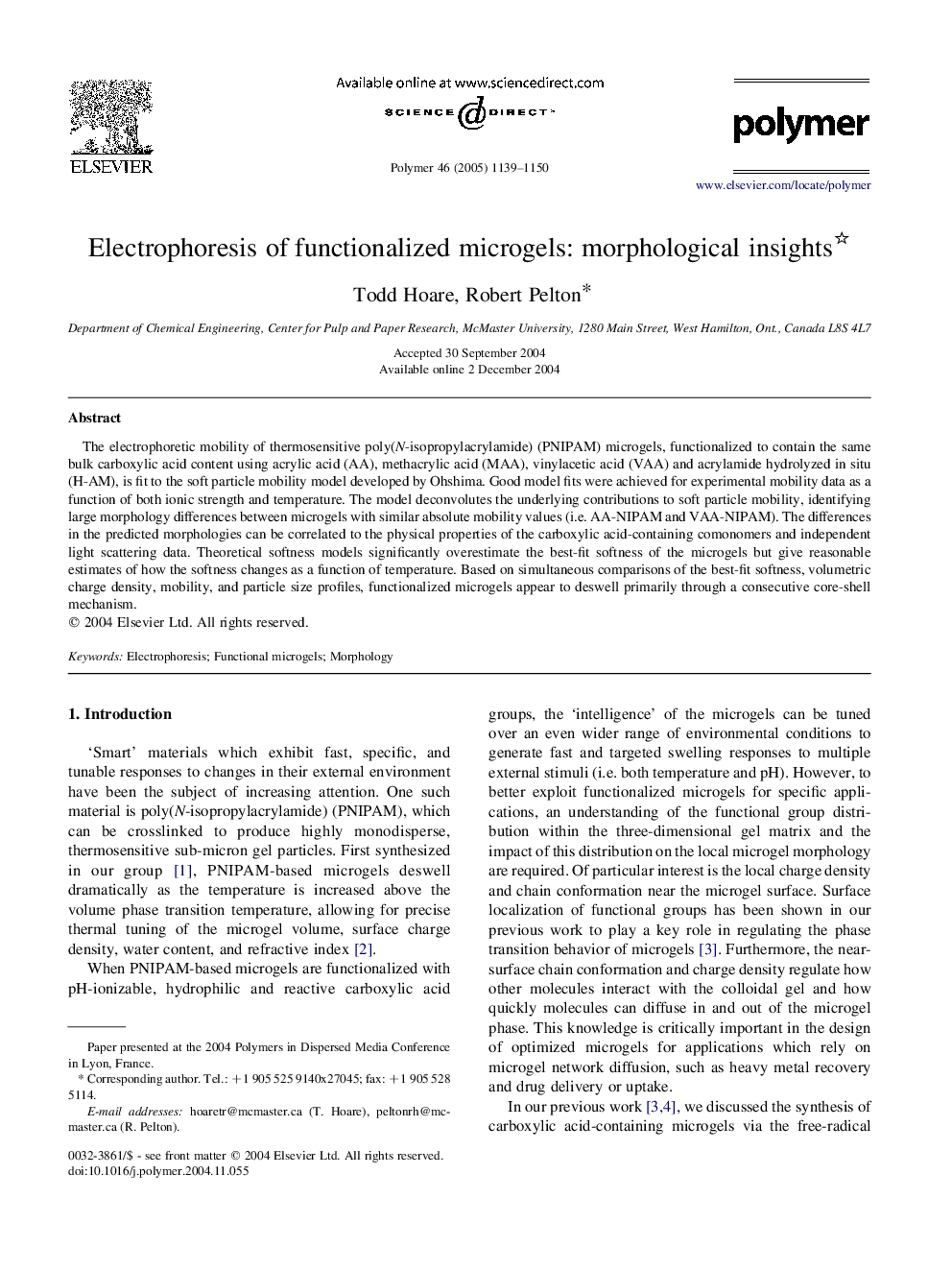| Article ID | Journal | Published Year | Pages | File Type |
|---|---|---|---|---|
| 9559274 | Polymer | 2005 | 12 Pages |
Abstract
The electrophoretic mobility of thermosensitive poly(N-isopropylacrylamide) (PNIPAM) microgels, functionalized to contain the same bulk carboxylic acid content using acrylic acid (AA), methacrylic acid (MAA), vinylacetic acid (VAA) and acrylamide hydrolyzed in situ (H-AM), is fit to the soft particle mobility model developed by Ohshima. Good model fits were achieved for experimental mobility data as a function of both ionic strength and temperature. The model deconvolutes the underlying contributions to soft particle mobility, identifying large morphology differences between microgels with similar absolute mobility values (i.e. AA-NIPAM and VAA-NIPAM). The differences in the predicted morphologies can be correlated to the physical properties of the carboxylic acid-containing comonomers and independent light scattering data. Theoretical softness models significantly overestimate the best-fit softness of the microgels but give reasonable estimates of how the softness changes as a function of temperature. Based on simultaneous comparisons of the best-fit softness, volumetric charge density, mobility, and particle size profiles, functionalized microgels appear to deswell primarily through a consecutive core-shell mechanism.
Keywords
Related Topics
Physical Sciences and Engineering
Chemistry
Organic Chemistry
Authors
Todd Hoare, Robert Pelton,
